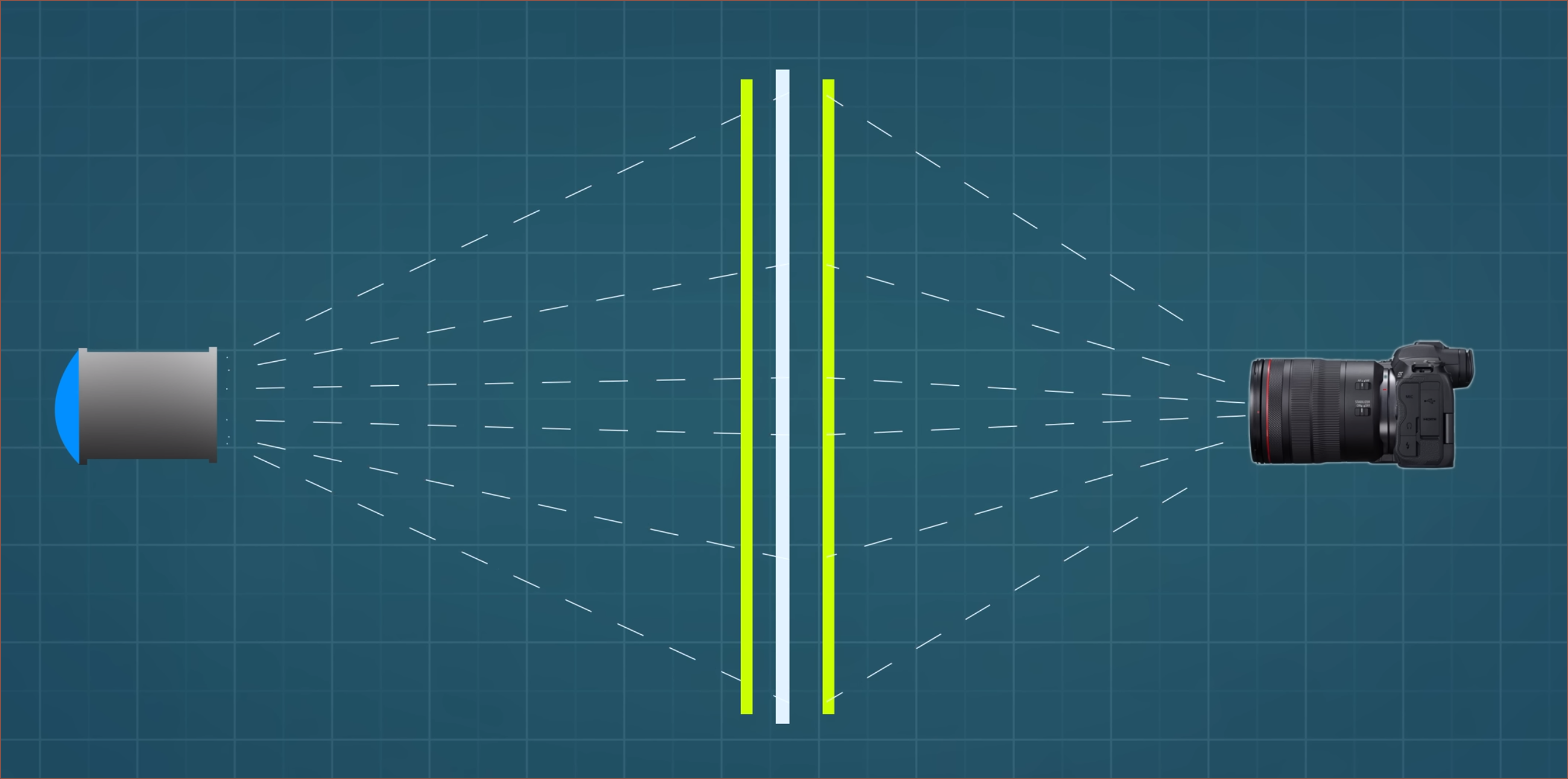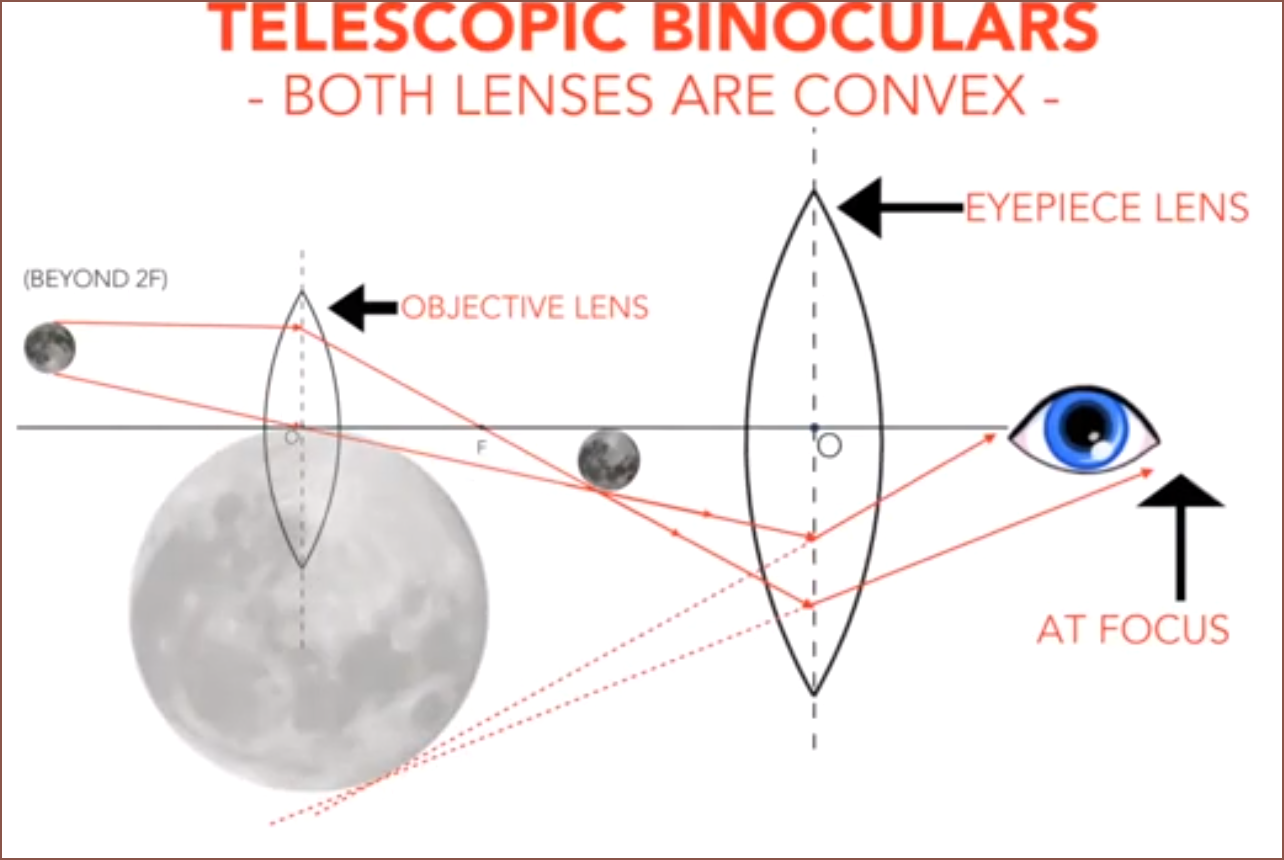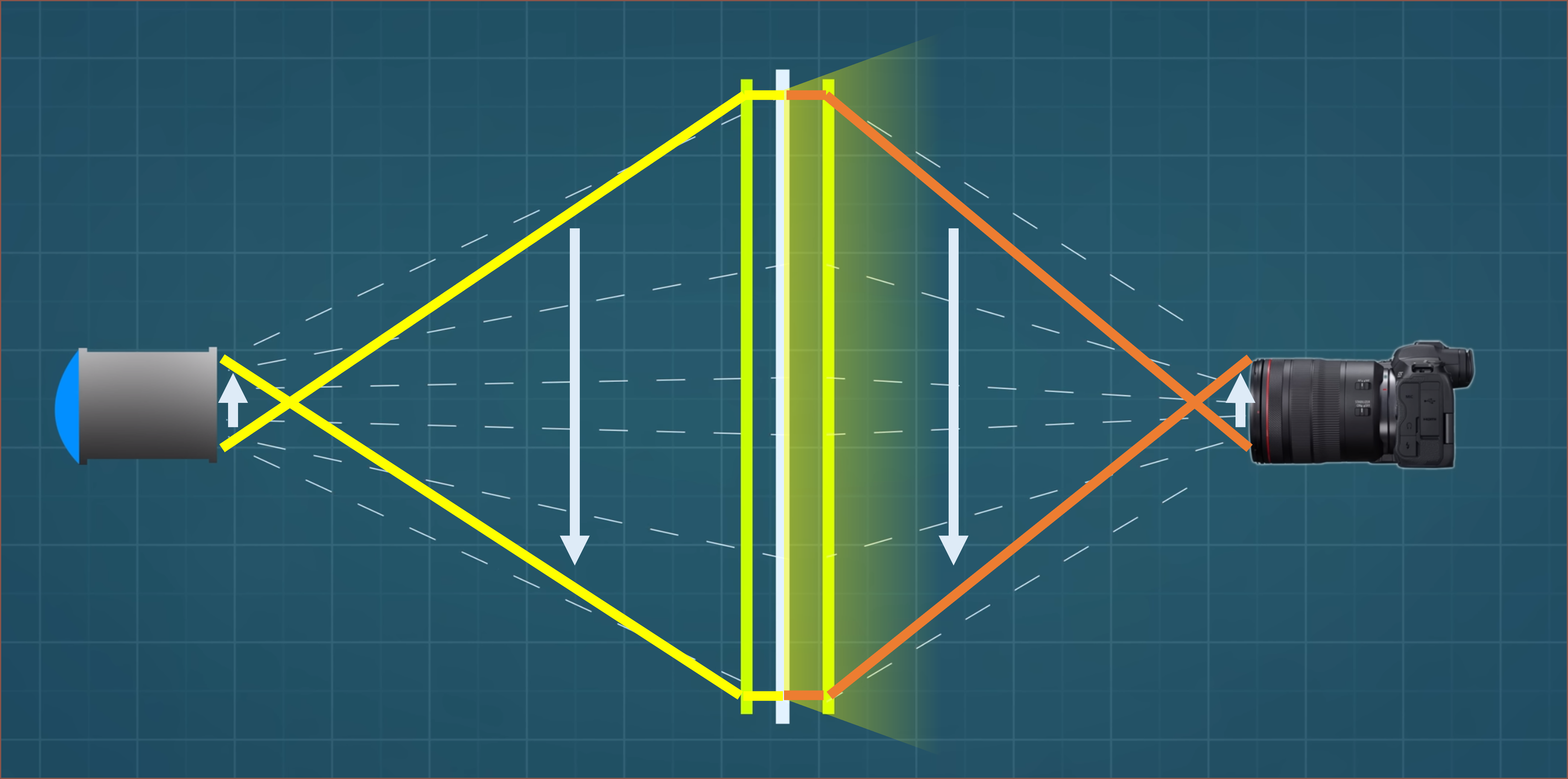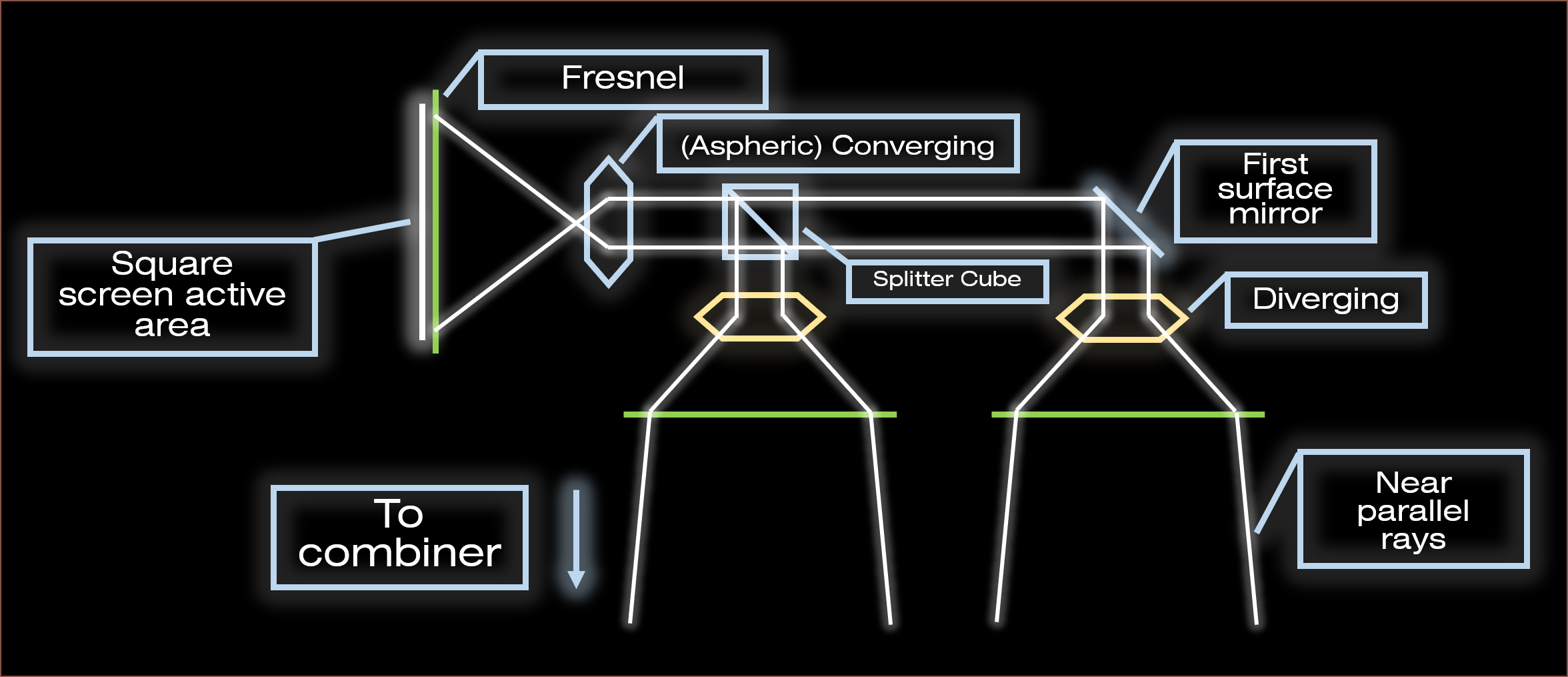I've been doing some more reading on aspherical lenses (such as here, here and here), and I'd still like to give standard ones a go first, at least for the large lenses. The reason is because of the high quality result DIY Perks achieved in one of his camera builds. He explains the use of fresnel lenses here, and I'd assume due to the size, they're the standard kind.
 In the above animated diagram, there's the lens at the left, the (lime green) fresnel lenses and a diffusing sheet in the middle. That sheet takes the parallel rays from the first fresnel lens and rescatters them. In other words, an image is formed on it. In my application, this would be the display panel.
In the above animated diagram, there's the lens at the left, the (lime green) fresnel lenses and a diffusing sheet in the middle. That sheet takes the parallel rays from the first fresnel lens and rescatters them. In other words, an image is formed on it. In my application, this would be the display panel.
So that failing computation was being mined in the back of my mind for a few days. Yesterday, I found this video:
(Favourite lines: What do you do if you wanted to view a tree on land? It can't be inverted! So there's a problem!)
The notable slide I want to talk about is this:
 It was an eye opening moment, realising that after the focus point, the rays once again diverge and can be focused again as if the actual object was at that point. The image is just rotated 180 degrees.
It was an eye opening moment, realising that after the focus point, the rays once again diverge and can be focused again as if the actual object was at that point. The image is just rotated 180 degrees.So the actual light is likely doing something like this:

- Pretend that the dotted lines aren't there.
- The arrows is to show if the image is 0 or 180degrees.
- The yellow lines are the light rays from the lens.
- They hit the fresnel and become parallel.
- Those then hit the difuser and light goes in all directions, originating from the difuser.
- The orange line from the diffuser are the rays that are still parallel to the optical axis.
- The second fresnel converges those rays and the image flips again before hitting the camera lens, or in my case, my eye.
Now, a diverging lens were the first shown in the binocular video. I think the reason for a converging lens setup is because those seem to be more common. I haven't come across a diverging fresnel yet.
Optical Diagram
 I found out from the OpenAR project that "first surface mirrors" are the kind of mirrors that don't have glass infront of it.
I found out from the OpenAR project that "first surface mirrors" are the kind of mirrors that don't have glass infront of it.
With the combiner, there are 2 reflections and a 180 degree rotation. Since the reflection axes are different, the reflection component is also 180 degrees, cancelling the rotation out. Reflection multiples of 2 also cancel out.
The nice thing about this is that the screen area can be a square prism, like half of DIY Perks' camera, which could help solve an aesthetic solution for Quad 1440px. The image can be compressed to a smaller area, meaning that smaller lenses, mirrors and beamsplitter cube can be used.
 kelvinA
kelvinA
Discussions
Become a Hackaday.io Member
Create an account to leave a comment. Already have an account? Log In.